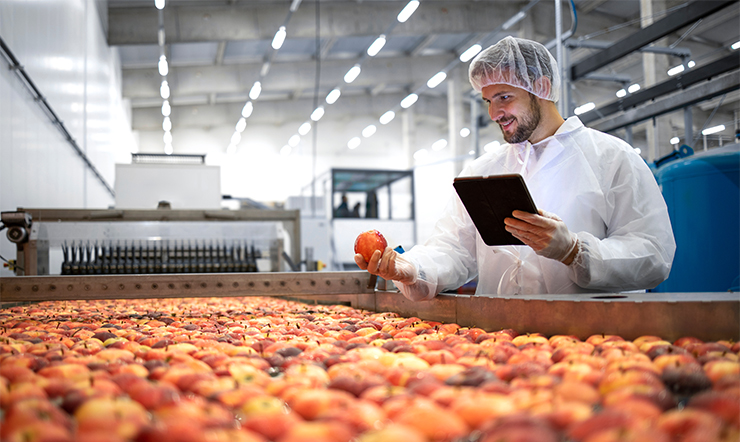
Food manufacturers regularly face a critical decision: should they make a product component in-house or buy it from external suppliers? This “make-or-buy” dilemma plays a vital role in shaping cost structures, production efficiency, and competitive advantage.
The right strategy can optimize resources and drive profitability, but the wrong decision can lead to increased expenses, inefficiencies, or compromised quality.
In this blog, we explore the key factors manufacturers must consider when evaluating make-or-buy strategies.
At the heart of the make-or-buy decision is cost. Making a product or component in-house requires investments in machinery, labor, raw materials, and operational expenses such as energy and maintenance.
On the other hand, purchasing from suppliers typically incurs material and delivery costs, but avoids fixed capital expenses.
Manufacturers must perform a thorough cost-benefit analysis to compare these options. In some cases, economies of scale can make in-house production cheaper over time.
However, when smaller batches are needed or market demand is volatile, outsourcing may prove more economical.
Key Consideration:
Can the company produce the item at a lower or comparable cost than buying it from a supplier?
For food manufacturers, product quality and consistency are essential for maintaining customer trust. Producing in-house allows for greater control over quality processes, ensuring that ingredients meet specific standards.
However, developing such processes can be resource-intensive and may require advanced expertise.
Outsourcing from reputable suppliers can reduce the burden on internal teams, but it introduces risks. Manufacturers must carefully vet suppliers to ensure their standards align with the company’s expectations.
Regular audits and collaborative partnerships are often needed to maintain consistency.
Key Consideration:
Does the company have the expertise to meet quality standards internally, or would a specialized supplier offer better consistency?
In the competitive food industry, manufacturers must respond quickly to changing consumer preferences.
Producing in-house can offer flexibility, as companies can adjust production schedules and experiment with new formulations without waiting on third-party suppliers.
However, in-house production can also limit flexibility if equipment capacity is stretched or employees are not trained to handle rapid changeovers.
Outsourcing allows manufacturers to scale production up or down more easily, but it may introduce delays in delivery or miscommunication.
Key Consideration:
Will making the component in-house provide greater agility, or would a supplier ensure faster scaling?
Supply chain disruptions—whether from raw material shortages, transportation delays, or geopolitical risks—can affect both internal production and outsourced components.
However, companies that rely on external suppliers are especially vulnerable if they have not diversified their supply sources.
In-house production reduces dependence on external vendors and gives manufacturers more control during disruptions, but it also places greater responsibility for managing raw material procurement and inventory.
Manufacturers must weigh the risks of supply chain interruptions against the stability of handling everything internally depending on their location as well as international laws and relations.
Key Consideration:
Can the company mitigate risks better by producing internally, or does outsourcing offer a more reliable solution?
One of the most strategic aspects of the make-or-buy decision is whether producing a component aligns with the manufacturer’s core competency.
If the company’s expertise lies in developing unique formulations or marketing high-quality finished products, diverting resources toward making ingredients may dilute its focus.
Outsourcing allows manufacturers to concentrate on their core strengths while leveraging the expertise of suppliers for non-core processes.
However, companies that produce key components in-house can build proprietary advantages and strengthen vertical integration, which may enhance competitiveness in the long run.
Key Consideration:
Does producing in-house support the company’s long-term strategic goals, or would outsourcing free up resources for core activities?
The food industry is subject to strict regulations concerning food safety, labeling, and traceability.
When manufacturing components in-house, companies have full oversight of compliance measures, but this also means greater responsibility for audits and certifications.
With outsourced components, the regulatory burden shifts to the supplier. While this can lighten the workload for manufacturers, it requires close monitoring to ensure compliance is not compromised.
Non-compliance, whether internal or external, can damage a company’s reputation and lead to legal consequences.
Key Consideration:
Which option—internal production or outsourcing—provides better control over compliance and traceability?
The make-or-buy decision in the food industry requires careful consideration of costs, quality, flexibility, risk, and strategic focus. There is no one-size-fits-all answer, and the right choice will depend on each manufacturer’s unique circumstances.
Companies that take the time to analyze both options thoroughly and align their decisions with their business objectives will be better positioned for long-term success.
A balanced approach—where certain components are produced in-house while others are outsourced—can offer the best of both worlds.
Regardless of the path chosen, manufacturers must build strong processes, foster good supplier relationships, and remain adaptable to industry changes to stay ahead in a competitive market.